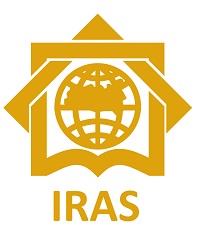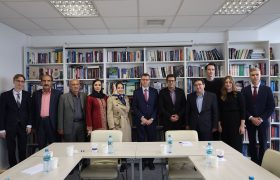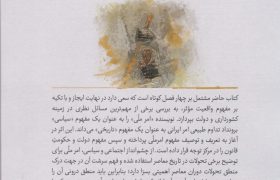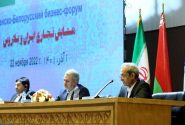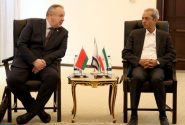By: Ebrahim Daryaee Motlagh, PhD candidate of Russian History at Chechen State Pedagogical University
In July 2024, the Indian Prime Minister Narendra Modi visited Moscow to attend the 22nd annual bilateral summit between Russia and India. During the meeting with President Vladimir Putin, the two sides discussed deepening bilateral relations in nine strategic areas. According to a joint statement which the Indian Ministry of External Affairs issued shortly afterwards, the main objective of this bilateral meeting was “to maintain the trend of dynamic growth of trade in goods and services between the two states and the desire to ensure a significant increase in its volume by 2030”[i].
This undertaking seemed to be in line with the new dynamics of Russian foreign policy following the military involvement in Ukraine. A year before the Modi-Putin meeting, the Concept of the Foreign Policy of the Russian Federation was released in March 2023. The new concept directs Kremlin’s diplomacy “to shape an equitable and sustainable world order that serves Russia’s interests”[ii]. In this sense, despite the fluidity of international relations, there is perhaps little doubt that this vision is unattainable or far-fetched with regard to Russo-Indian relations. The reason for this optimism among international observers is the seemingly rock-solid nature of these relations which has complex historical roots. Hence, to understand this trend, one must take a historical perspective and situate the origins of Moscow’s strategic alliance with India in a post-Cold War trajectory.
Historians usually trace the formal relationship between the two governments to April 1947, months before India’s independence which occurred on August 15, 1947. In this sense, Joseph Stalin’s well-known statement in 1953 may clearly show the significance of these relations. Addressing the Indian officials, Stalin had asserted that “we” the Soviets would not consider India as an enemy and “this will continue to be our policy and you can count on our help”[iii]. Arguably, Stalin’s vision encapsulated the essence of the relationship between the two states that continued during the Cold War and even after the demise of the Soviet system. Indeed, both states enjoyed strategic relations during the Cold War while India at times attempted to distance itself from the bipolar order of that era by promoting the so-called Non-Alignment Movement. Therefore, one may assume that maintaining or perhaps developing relations with India was an easy task for the USSR successor state. Nonetheless, the historical records may show uneven patterns. In fact, the status of current relations between Kremlin and New Delhi has arisen from a pre-existing, mutually beneficial and time-tested structure. In an effort to restore Russia’s global prestige, Boris Yeltsin, the first democratically elected president of the new Russian Federation, visited New Delhi in January 1993. However, in this particular case, Russia had encountered yet another constraint which arose from the political atmosphere in India and could hamper efforts to develop strategic relations with the country. Yeltsin’s government and his foreign minister Andrei Kozyrev initially attempted to pander to the West and especially the United States early in the 1990s. The relationship with Washington was of such importance that Yeltsin and Kozyrev were repeatedly criticized on the home front for neglecting the interests of Russia in response to the demands of the US government.
In the post-Soviet environment, India was attempting to join the ranks of states with nuclear weapons. Naturally, this process could present diplomatic constraints for the Russian Federation because the Bill Clinton administration had imposed sanctions on India on account of its nuclear ambitions and ballistic missile program. In that framework, military cooperation or the supply of sensitive technologies to India could trigger Washington’s punitive actions. Hence, Yeltsin’s cautious pivot to India involved some risk. Nevertheless, as the records show, the Russian government was determined to deepen relations with India. To show its resolve, Russia supplied advanced rocket engines which were to be used in India’s controversial space program. To reflect this determination, news outlets such as the Washington Post highlighted Yeltsin’s outspoken criticism of the United States regarding the sale of technology to India and considered it a sign of Moscow’s decision to adopt a more independent foreign policy. Therefore, in the context of relations with India, Yeltsin’s words were highlighted saying that “no other state can command such a great nation as Russia to terminate its obligations”[iv]. Today, Russia is considered the largest exporter of arms to India and the two governments work closely in areas such as the space program. However, this cooperation depended at the time on the persistent diplomatic activities of the Russian government. Therefore, this context gave Yeltsin’s visit to India a special meaning which the media addressed with great fervor. Earlier, Yeltsin had supported his government’s consensus “to move away from a pro-Western emphasis” which showed once again that his visit to India was part of Kremlin’s new “purposeful Eastern policy”[v]. In this way, the new relations with India were so important that Kremlin had decided to oppose the restrictive measures of the United States and some western governments which had emerged in the form of their Missile Control Regime. Therefore, in hindsight, Yeltsin’s visit was not only symbolic, but was a critical part of Russia’s new strategy to balance American hegemony. As a result, military cooperation is now a fully developed aspect of the partnership between India and Russia.
But Yeltsin’s visit to India was also crucial in another way. Due to economic pressure, the Russian Federation struggled to obtain financial resources during the 1990s. The question of ‘resource’ was a major driver of Russian foreign policy towards India. In this case, India’s debt repayment, which had been caused by the country’s massive military purchases from the Soviet Union, was a matter of dispute between the two sides, not least because the value of the ruble had greatly decreased and trade with the Soviet Union had been conducted in rubles. Hence, Yeltsin’s visit was also crucial because of the need to replace the Indo-Soviet Peace and Friendship Treaty of 1972. This treaty had determined the relations between New Delhi and Kremlin in a bipolar and ideological environment. It was to be replaced with a more pragmatic agreement based on the imperatives of the post-Soviet environment. Simply put, the bilateral strategies of the two governments needed a reshuffle and the same pattern could be detected proportionately on the Indian side.
In India, P. V. Narasimha Rao served as Prime Minister from 1991 to 1996. In terms of foreign policy, Rao proposed a new strategic perspective dubbed today as the “Look East Policy”. Like Russia, the Indian government had strategic ambitions based on the country’s unique geographical location, its geopolitical imperatives and the new world order. In June 1994, Rao became the first high-ranking Indian official to visit Moscow in the post-Cold War era. The aim of this visit was to complete and elucidate the goals which the Russians had set earlier. Interestingly, as the Indian authorities were making preparations for Rao’s visit to Moscow, Youri F. Yarov, the Deputy Prime Minister of Russia, was visiting India to address the remaining uncertainties in previous agreements. In this connection, Yarov claimed that discussions between the two governments were still evolving within a long-term perspective[vi]. From these signs, it can be assumed that Moscow and New Delhi were determined to resolve their differences in order to cement strategic relations that would define the level of cooperation in the new century.
This being said, the extensive diplomatic efforts of India and Russia were ultimately successful. In 1997, these efforts led to the conclusion of a ten-year agreement to enhance military and technical cooperation which has made India a large market for the Russia military industries. Moreover, in October 2000, the Russian diplomatic activities led to the signing of the Declaration on the India-Russia Strategic Partnership which was perhaps the main achievement of this historical process. Regarding the question of India, Russian diplomatic activities were based on maintaining and promoting the preexisting alliances and adopting an independent policy. In this sense, Kremlin’s Eurasianist approach resembled the “Look East Policy” of the Indian government in the same historical timeframe. Based on the records that document these diplomatic activities, in both cases, Russia’s independent foreign policy grew early in the post-Soviet environment and brought significant achievements by the end of the 1990s. Accordingly, the optimism associated with the prospects for Russia-India trade relations for the period up to 2030 is largely due to a historical pattern that the Kremlin and New Delhi have consistently reinforced since 1991 through meetings and ongoing diplomatic efforts.
[i] “Leaders’ Joint Statement on the development of strategic areas of Russia-India economic cooperation for the period up to 2030”. mea.gov.in. Ministry of External Affairs, Government of India.
[ii] The Concept of the Foreign Policy of the Russian Federation. 31 March 2023
https://mid.ru/en/foreign_policy/fundamental_documents/1860586/
[iii] Addy, P. (2018). Tibet: Pawn and Pivot of the Great Game. Academic Publishers. P. 245
[iv] Hiatt, F (1993, January 25). ‘Yeltsin: US likes to ‘dictate’: Criticism suggests Moscow seeks more independent foreign policy. Washington Post. https://www.washingtonpost.com/archive/politics/1993/01/26/yeltsin-us-likes-to-dictate/966fae2c-5fb5-4e2f-b0b5-9e354d289edf/
[v] Hazarika, S. (1993, January 30). Despite U.S., Yeltsin Backs Rocket Deal With India. The New York Times. https://www.nytimes.com/1993/01/30/world/despite-us-yeltsin-backs-rocket-deal-with-india.html
[vi] Indian Prime Minister to visit Moscow (1994, June 8). United Press International: UPI Archives. https://www.upi.com/Archives/1994/06/08/Indian-Prime-Minister-to-visit-Moscow/4496771048000/

